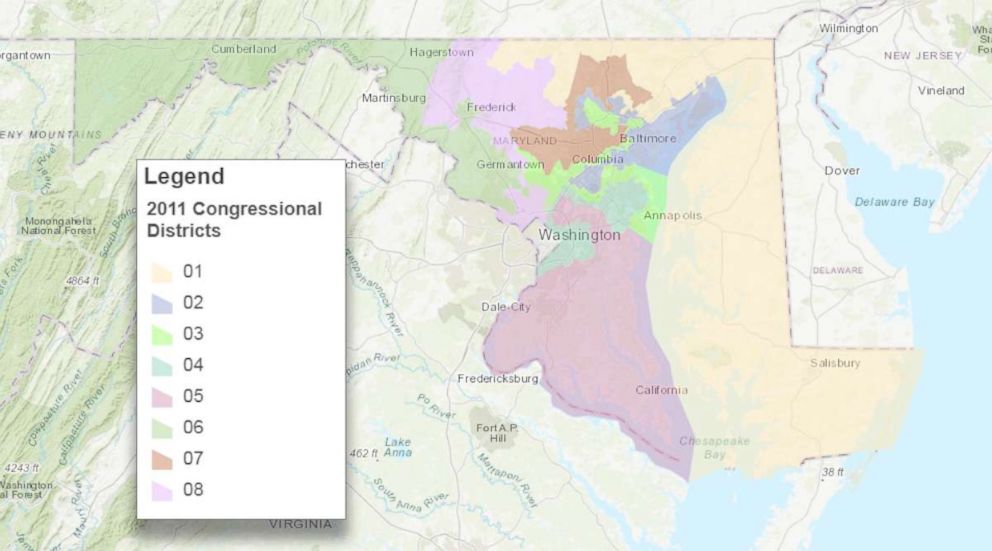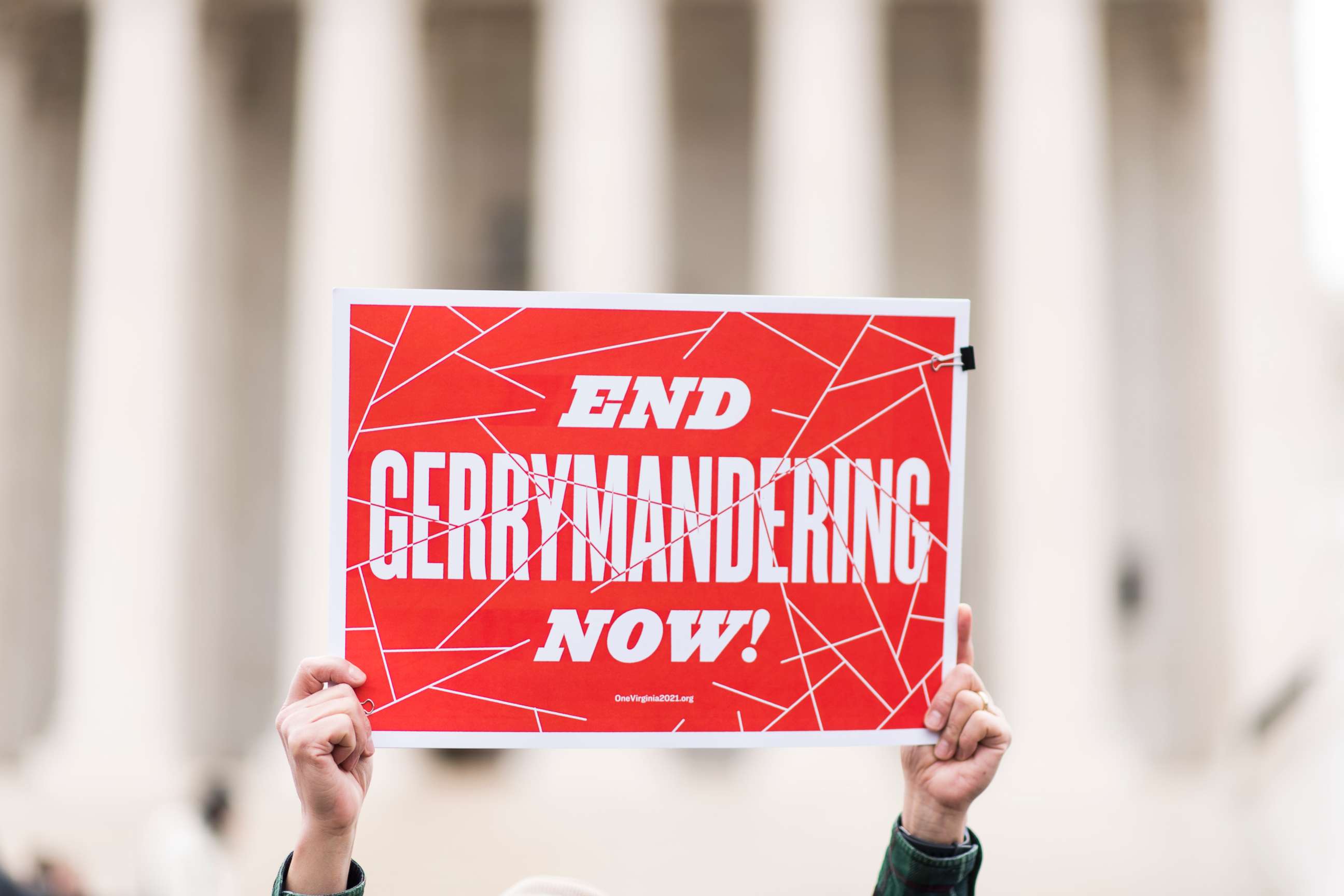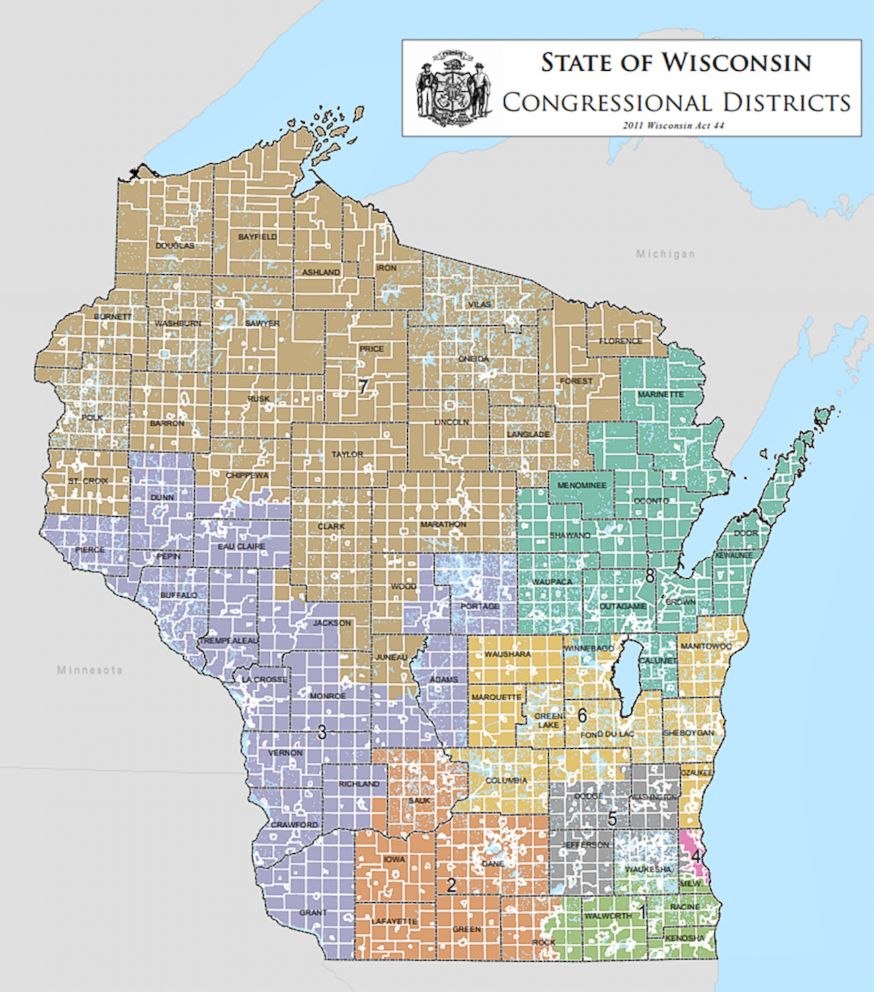What's at stake in gerrymandering case in front of the Supreme Court?
What's at stake in gerrymandering case in front of the Supreme Court?
The U.S. Supreme Court heard oral arguments today in Benisek v. Lamone, a case that could have major ramifications for how congressional districts in the United States are agreed to and drawn.
The Benisek case revolves around the congressional map in the state of Maryland, and whether or not Democrats in the state drew the map to intentionally disadvantage Republican lawmakers from winning seats.

While the case before the court today focuses on just one state, both major political parties are closely monitoring the issue of gerrymandering and the drawing of congressional maps ahead of an important midterm election cycle. Many lawmakers elected as governors and state legislators in 2018 will be in charge of redrawing the maps that will be used after the 2020 election.
Both parties are keenly aware that who wins this year will likely have a huge impact on political power over the next decade.

A report released earlier this week by the Brennan Center for Justice found that even if Democrats are able to win the overall popular vote in House races by 10 points in 2018, they will only net a gain of 21 seats in the U.S. House, meaning they would fall short of re-taking the majority.
While some argue that projection overstates overall Republican strength in key congressional districts, groups like the National Democratic Redistricting Committee (NDRC), led by former Attorney General Eric Holder, are pouring resources into targeted gubernatorial and state legislative races across the country in anticipation of the redistricting process.
Regardless of the winners in 2018, the case before the Supreme Court Wednesday, and a similar case in Wisconsin heard last year, could fundamentally alter the complex and consequential process of drawing legislative districts in the United States.

ABC News spoke with Kate Shaw, an ABC News contributor who also teaches at Cardozo Law School, about the case and its potential impact on American politics.
What’s at issue in this case?
This case, the second gerrymandering dispute the court will hear this term, involves a challenge by Maryland Republicans, who claim that a congressional map drawn by state Democrats puts them at an impermissible disadvantage — in other words, that the map represents an unconstitutional gerrymander.
In most states, the legislature draws the districts that are used for electing representatives to both Congress and state legislatures.
When drawing those districts, the party in control often uses that opportunity to increase its partisan advantage. And the techniques have become increasingly sophisticated and effective. Opponents of this process charge that politicians today effectively pick their voters, instead of voters picking their representatives.
What’s the difference between this case and the other gerrymandering cases before the Supreme Court?
First there's the legislative body in question. The Wisconsin case from last fall, Gill v. Whitford, involved state legislative districts; this case involves congressional districts in Maryland.
Then there's the question of political party. In Wisconsin, it was the Republicans in power who drew the map that allowed them to convert a statewide vote share of 48.6% into 60 of the state’s 99 assembly seats; in Maryland, Democrats redrew a congressional district so that a 28-point Republican victory in 2010 became a 21-point Democratic victory in 2012. There’s no real question that in both cases, partisanship was one of the main considerations in drawing the districts at issue.
Finally, there's the legal theory the plaintiffs are using. In both cases, the challengers argue that the Constitution limits the degree to which a political party can use the redistricting process to entrench itself in power. The Wisconsin challengers relied primarily on the equal protection clause, while this case focuses on the First Amendment. But together they offer the justices the chance to make significant changes to the law and practice of redistricting.
Do these cases represent the first time the Supreme Court is confronting this question?
No, but they may represent the first time the court actually gives an answer.
The Supreme Court has had a couple of previous significant encounters with partisan gerrymandering. In 1986 it first decided it could entertain these disputes at all. Then in 2004, four justices took the position that excessively partisan gerrymanders are unconstitutional, under a variety of different theories, while four argued that the issue of redistricting was one to be resolved in the political process, not the courts. But Justice Anthony Kennedy took a middle position, arguing that partisan gerrymanders might be unconstitutional if the right theory could be found, but that he had not yet encountered such a theory. The cases out of Wisconsin and Maryland represent attempts to provide Anthony Kennedy with a theory of unconstitutionality that would allow him to join the Court’s more liberal justices in finding that at least some partisan gerrymanders violate the Constitution.
What are the possible outcomes here?
If the challengers in one or both cases win, the Court could finally set down some principles to limit the use of partisanship in redistricting. Or the Supreme Court could decide to stay out of the matter completely—either leaving the door open to future cases or perhaps slamming it shut completely. Finally, it could punt--at oral arguments today, Justice Breyer suggested setting the two cases for reargument together, perhaps with a third case out of North Carolina that presents similar questions. Whichever way the Court goes, we’ll have some sort of answer by the end of June.




